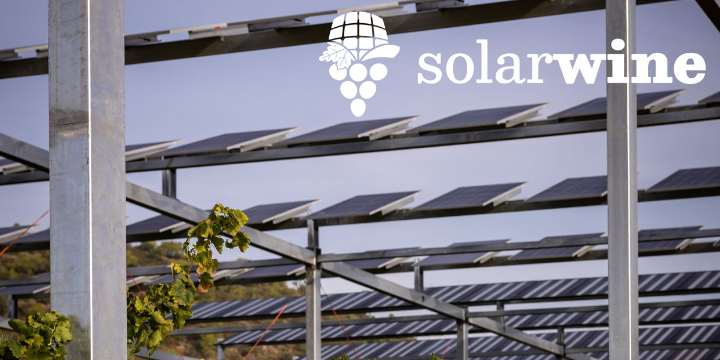
The SOLARWINE Operational Group has completed the installation of two agrovoltaic pilot plants covering nearly 2,000 m² of experimental area. These facilities will validate the technical and economic feasibility of integrating agriculture and photovoltaic energy, while assessing their microclimatic effects and impact on vineyard productivity and resilience in the face of rising temperatures.
The first plant has been installed on the organic Mas Rabell vineyard of Familia Torres, located in Sant Martí Sarroca (Penedès, Barcelona), covering an area of 1,000 m². The second, with more than 900 m², has been installed on the organic Bobal vineyards of Huerto Tornasol in the town of Fuentealbilla (Albacete).
These two pilot plants, located in regions with different climatic conditions, highlight the value of interregional collaboration and the exchange of results. Moreover, they will enable more solid and reliable conclusions, by taking into account different climatic variables that may influence the impact of agrovoltaics on the vine.
For its implementation, SOLARWINE has a budget of €706,696.55 and has received funding of €599,938.89 under the framework of the Strategic Plan of the Common Agricultural Policy (CAP) 2023–2027, financed by the Ministry of Agriculture, Fisheries and Food (MAPA) and the European Agricultural Fund for Rural Development (EAFRD).
From a technical perspective, the pilot plants consist of a structure of solar panels elevated 5 meters above the ground, enabling machinery to pass beneath the solar canopy and facilitating the automation of harvesting — a pioneering aspect of this project. Furthermore, to comparatively assess their effect on crop development and energy yield, two types of solar modules have been installed: opaque and bifacial semi-transparent, along with two density scenarios, thus creating different panel density conditions that will allow analysis of the impact of varying shading levels on the vines.
Another key aspect of the pilots is the network of soil and climate parameter sensors, which will make it possible to monitor and validate agronomic and energy-related aspects associated with the different scenarios. This monitoring system will provide crucial data to evaluate the impact of agrovoltaics on vineyard development and on energy production efficiency, contributing to informed decision-making and resource optimization.
Ea sit quaeque consulatu, nam causae nonumes in, ne sea graeci quidam pericula. Id eius scriptorem sit, affert ridens ea eam, no est illum instructior. Cu veri gubergren appellantur vis. Te summo facilisi constituto qui, ad mundi nemore causae pro. Equidem euripidis at vis, mundi intellegat quaerendum ex sit, ea nusquam fierent mea.
Ea pro nisl adhuc consequat. Mei at posse graecis epicurei, novum causae erroribus usu no, ne ubique praesent scribentur quo. Ea vis quod labitur sapientem, qui te putant laoreet sententiae, alii velit vidisse eam ex. Eum ut idque soluta diceret.
Comments